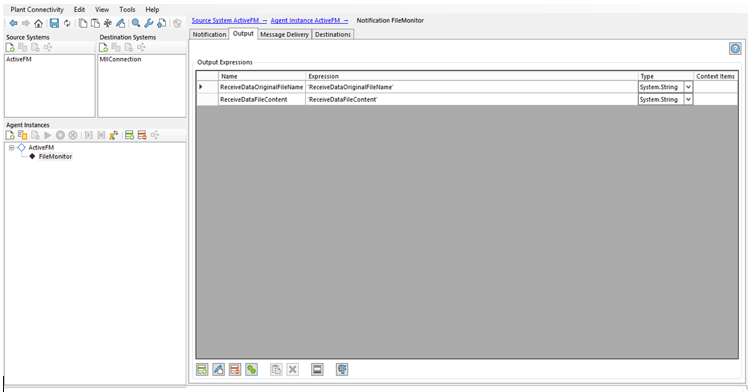
- SAP Community
- Products and Technology
- Product Lifecycle Management
- PLM Blogs by Members
- PCo CONFIGURATIONS
Product Lifecycle Management Blogs by Members
Get insider knowledge about product lifecycle management software from SAP. Tap into insights and real-world experiences with community member blog posts.
Turn on suggestions
Auto-suggest helps you quickly narrow down your search results by suggesting possible matches as you type.
Showing results for
former_member53
Explorer
Options
- Subscribe to RSS Feed
- Mark as New
- Mark as Read
- Bookmark
- Subscribe
- Printer Friendly Page
- Report Inappropriate Content
10-17-2017
6:32 PM
PCo:
PCo is known as Plant Connectivity. This tool is used to connect different plant applications. SAP MII has a dedicated PCo connector to communicate with PCo.
In this document we will cover
- Save file
- Read file
- OPC connection
PCo Panels:

Save file via PCo:
Steps:
- Create a folder to save file

- Create a source system to save file the folder

- Create an agent using the source system
- Enable the checkbox Run Agent Instance as an Executable

- Configure the Query Ports

- Create the PCo connector at MII

- Use PCo query to send the file

Tag store Query

Execute the query

Result:
- File created at the source folder

Read File Via PCo:
- Create a File monitoring source system to read the folder

- Create an agent using the File monitoring source system
- Subscribe File Contain and File Name

Create a notification

Subscribe the output elements

Select a destination transaction

- Result:The destination Transaction gets executed on creation of a new file in the folder.
Connect OPC Via PCo – Write Values in tag:
- Create a OPC DA source system to connect KEP Wear

Connect OPC Via PCo – Send OPC Notification:
- Create a OPC DA source system to connect KEP Wear

Subscribe the tags needed

Create a notification and add a trigger condition

Add the output elements

Select a destination transaction

Result:
On change on the values of the tag, the destination transition gets executed.
Note: When we create an agent, it creates an windows service.

OPC connection from MII
- Create a OPC DA source system for MII

Configure the query Ports

Create a PCo connection in MII. * Shown above.
Create a PCo query to send data to OPC tag.
MII agent and windows Services
“Run agent instance as an executable” – In most of the implementations, we enabled this checkbox when we needed the agent to be used from an outside system like SAP MII. We also differentiated the agents by two categories:
- Agents will subscribe items and will send notification
- Agents will only work as a connector for the MII system
The agents which subscribe and notifies MII are always needed to be running to keep reading the subscribed items. Whereas for the 2nd type of agents do not have any subscription item and will only listen to the port for any incoming request. So, the second type of agents does not require to run as a service always.
We realized when we enable the “Run agent instance as an executable”, the service is in stopped condition but still working as desired.
Example Screenshots below:



After categorizing the agents as above, we saw the server resource utilization decreased comparing before when we used to create the agents by disabling “Run agent instance as an executable”.
1 Comment
You must be a registered user to add a comment. If you've already registered, sign in. Otherwise, register and sign in.
Labels in this area
Related Content
- Implementation journey of SAP ECTR at OSG EX-CELL-O Coldforming Technologies in Product Lifecycle Management Blogs by SAP
- How to configure NWDI in SAP MII for Content Development in Product Lifecycle Management Blogs by SAP
- MII configuration and content transport management in Product Lifecycle Management Blogs by SAP
- Variant configuration-dependencies not shown if characteristic does not have a value in Product Lifecycle Management Q&A
- Is there a Mass update app for CS40 'Create Link to Configurable Material' ? in Product Lifecycle Management Q&A